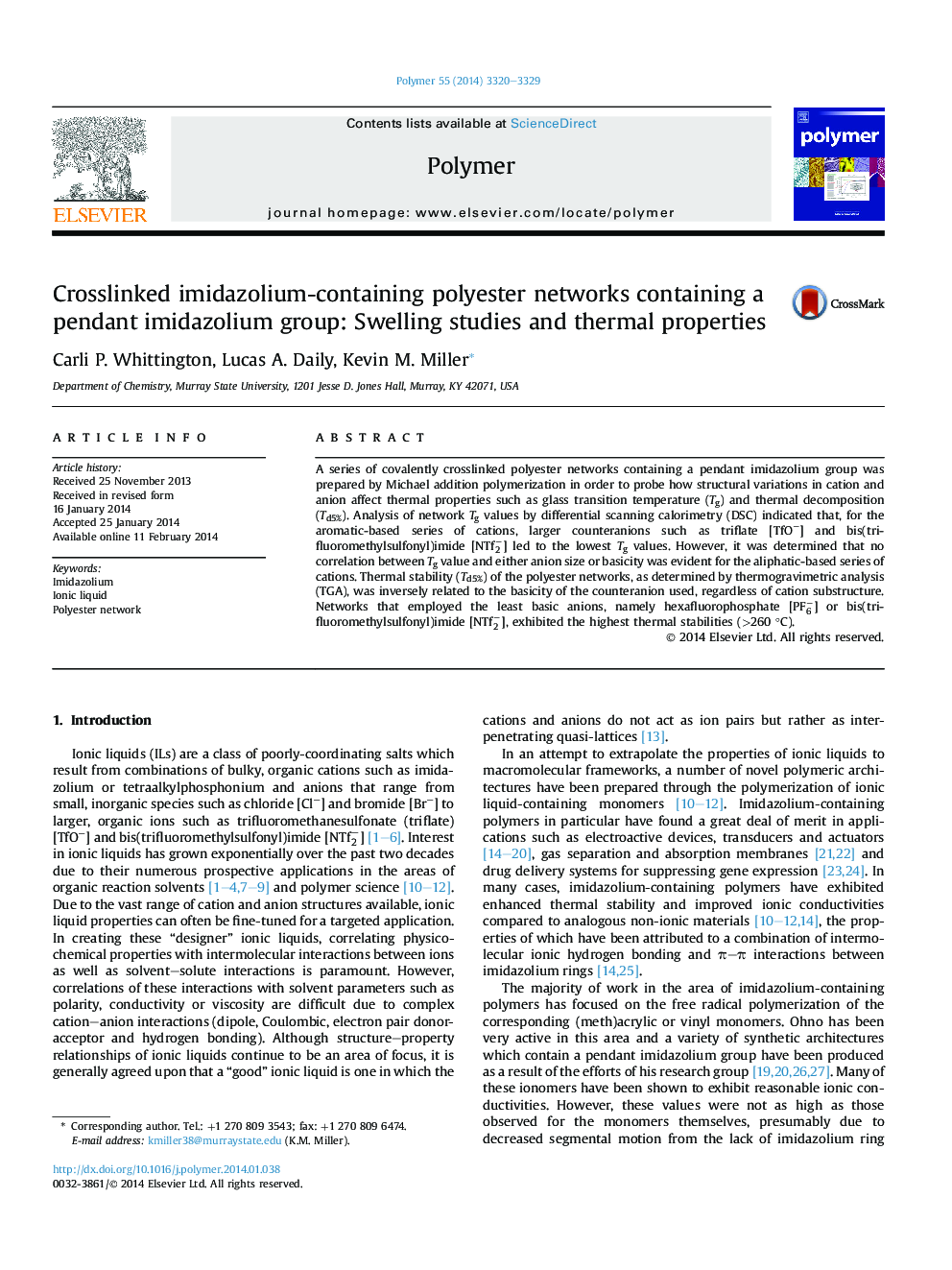| Article ID | Journal | Published Year | Pages | File Type |
|---|---|---|---|---|
| 5181134 | Polymer | 2014 | 10 Pages |
A series of covalently crosslinked polyester networks containing a pendant imidazolium group was prepared by Michael addition polymerization in order to probe how structural variations in cation and anion affect thermal properties such as glass transition temperature (Tg) and thermal decomposition (Td5%). Analysis of network Tg values by differential scanning calorimetry (DSC) indicated that, for the aromatic-based series of cations, larger counteranions such as triflate [TfOâ] and bis(trifluoromethylsulfonyl)imide [NTf2â] led to the lowest Tg values. However, it was determined that no correlation between Tg value and either anion size or basicity was evident for the aliphatic-based series of cations. Thermal stability (Td5%) of the polyester networks, as determined by thermogravimetric analysis (TGA), was inversely related to the basicity of the counteranion used, regardless of cation substructure. Networks that employed the least basic anions, namely hexafluorophosphate [PF6â] or bis(trifluoromethylsulfonyl)imide [NTf2â], exhibited the highest thermal stabilities (>260 °C).
Graphical abstractDownload high-res image (134KB)Download full-size image
